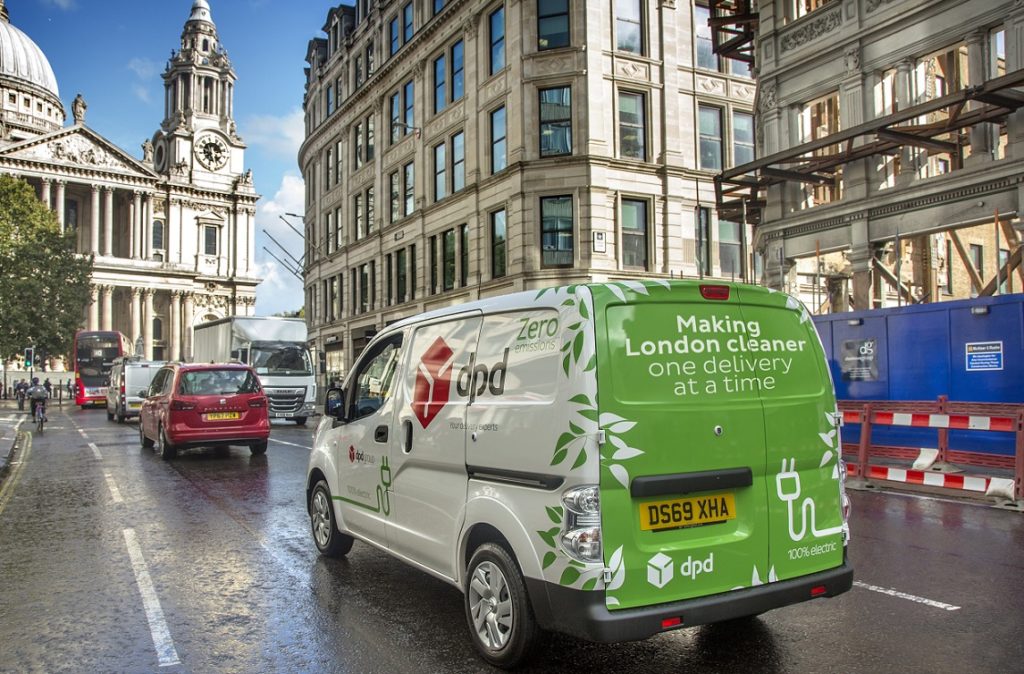DPD has plans to deliver to 25 of the largest towns and cities in the UK using only zero and low-emission vehicles by 2025. Olly Craughan, DPD’s head of CSR, explains what this ambition involves
Our Vision 25 strategy means we will deliver to 25 towns and cities (over 2,250 individual postcodes), which will cover over 25% of the UK’s population, using only zero or low emission vehicles by the end of 2025.
It has already involved detailed data analysis and investment projections to ensure the strategy is realistic and achievable. And sourcing the vehicles, is obviously key.
The project involves 36 depots, so a huge amount of planning, communication and organisation with each depot and their workforce is imperative for successful implementation in each town or city.
In terms of charging infrastructure, we will install over 500 additional chargers in our depots and work with public charge partners to ensure we have the ability to charge en route and our drivers have access and can utilise these chargers overnight.
How much carbon is this expected to achieve?
We estimate that through the Vision 25 project alone we will save 43,000 tonnes of CO2 – this doesn’t include any other initiatives.
How else are you managing last mile deliveries?
We already have over 700 EVs on the road, nationwide. We are always trialling and testing new electric vehicles to ensure we are utilising cutting edge technology, and investigating alternative delivery solutions.
What challenges are there to running electric vehicles?
The challenges are the initial cost of the vehicle, the range and charging infrastructure.
The EV versions of the classic 3.5t van are typically £20,000 more than the ICE equivalent, but we expect this cost to continue to reduce over the coming years, so they become more comparable in terms of initial cost.
The range of these vehicles is still typically only 70-80 miles per charge, which is extremely limiting compared to an ICE equivalent, however we are seeing battery technology progress rapidly and there are several EVs coming to market with a 140-180 mile range. These will be game changers!
Charging is and will continue to be the biggest challenge to any business transitioning to EVs. We have pursued a mixture of home and depot charging and continue to install chargers at our sites. However, the growth of public charging needs to increase at a faster rate.
Tell us about DPD’s plan to trial an Volta electric truck
The vehicle isn’t available to us until Q1 2021. However, we will have the vehicle for between four and six weeks to conduct a full trial in both urban and hub environments.
Is DPD investigating any other alternative fuels?
Our focus at the moment is on electrifying our final mile delivery fleet, but we continue to review our options regarding our larger vehicles (HGVs). There are challenges with the electrification of that size of vehicle, but we keep an open mind and are constantly reviewing all the options.
Has DPD come across any challenges during the Covid-19 pandemic?
I think we adapted incredibly quickly back in March and invested significantly with 6,000 new UK jobs and a £200m infrastructure investment.
The investment included 15 new regional depots and we have recruited 3,500 new drivers and 2,500 new full-time staff in depots, hubs and in management positions. Everything is in place for the next challenge which is Black Friday and Christmas.
There are advantages for us during lockdown, in that the roads are quieter and more people are at home to receive parcels. But it is certainly a different challenge to run the operation at a higher capacity all year round.
What advice would you give to other companies looking to adopt electric vehicles?
There are challenges but we can all overcome them. When looking at EVs, you need to think of TCO (Total Cost of Ownership) and not the initial cost of the vehicle, because over the lifetime of an EV its cost is close to an ICE vehicle.
Charging infrastructure is the biggest challenge to any business when adopting EVs, so it is extremely important to have a robust strategy in place to enable a successful transition.
Source: https://greenfleet.net
CUT COTS OF THE FLEET WITH OUR AUDIT PROGRAM
The audit is a key tool to know the overall status and provide the analysis, the assessment, the advice, the suggestions and the actions to take in order to cut costs and increase the efficiency and efficacy of the fleet. We propose the following fleet management audit.




